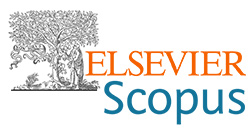Determining boride layer thicknesses formed on XC38 steel with artificial neural network
DOI:
https://doi.org/10.62638/ZasMat1221Abstract
Boride layers result from surface treatments of materials, offering valuable mechanical and tribological aspects that extend the material's life expectancy and potential. They are achieved by a process known as boriding in which boron atoms are diffused into the material until saturation, where a layer that may be mono or dual-phased begins to thicken over time depending on the period of treatment, the temperature held, the media applied, the composition of the material with its impurities, and more. Due to the difficulty of encompassing all those different parameters that influence the kinetic evolution of that boride layer, the idea was to start by training an artificial neural network to estimate its thickness with only two variables and inspect the results. Three experimental observations out of nine were used as validating data, while the rest were training data, along with others added. Depending on the reliability of the predictions given by the artificial neural network, further research can explore the possibilities of training it on different samples and environments through data mining.
Keywords:
Machine learning, Artificial Neural Network, Layer thickness, Boride layers, BoridingReferences
Mebarek, B., Zanoun, A., & Rais, A. (2016). Comparison of two numerical approaches for the thermochemical boriding treatment of XC38 steel. Metall. Res. Technol., 113(1), 104. https://doi.org/10.1051/metal/2015046
El Guerri, Y., Mebarek, B., & Keddam, M. (2022). Impact of the diffusion coefficient calculation on predicting Fe2B boride layer thickness. Sciendo, Koroze a Ochrana Materialu KOM - Corrosion and Material Protection Journal, 66(1), 25-35. https://doi.org/10.2478/kom-2022-0005
Kulka, M. (2019). Current Trends in Boriding Techniques. Springer Cham, Switzerland. https://doi.org/10.1007/978-3-030-06782-3
Genel, K., Ozbek, I., Kurt, A., & Bindal, C. (2002). Boriding response of AISI W1 steel and use of artificial neural network for prediction of borided layer properties. Surface and Coatings Technology, 160(1), 38-43. https://doi.org/10.1016/S0257-8972(02)00400-0
Campos, I., Islas, M., Ramirez, G., Villa Velazquez, C., & Mota, C. (2007). Growth kinetics of borided layers: Artificial neural network and least square approaches. Applied Surface Science, 253(14), 6226-6231. https://doi.org/10.1016/j.apsusc.2007.01.070
Liu, Y., & Zhang, Z. (2012). Application of Neural Network on Solid Boronizing. International Conference on Intelligent Computing, ICIC 2011: Bio-Inspired Computing and Applications, 6840, 1-7. https://doi.org/10.1007/978-3-642-24553-4_1
Rayane, K., & Allaoui, O. (2015). Application of Neural Network for prediction of boride layer depth obtained on XC38 steel in molten salts. Defect and Diffusion Forum, 365, 194-199. https://doi.org/10.4028/www.scientific.net/DDF.365.194
Mota-Hernandez, C. I., Alvarado-Corona, R., Felix-Hernandez, J. L., & Morales-Matamoros, O. (2017). Analysis and Application of ANN to Layers of Bored Steel. RevActaNova, 8(1), 94-108. ISSN: 1683-0789
Mebarek, B., & Keddam, M. (2018). A fuzzy neural network approach for modeling the growth kinetics of FeB and Fe2B layers during the boronizing process. Matériaux & Techniques, 106(6), 603. https://doi.org/10.1051/mattech/2019002
Mebarek, B., & Keddam, M. (2019). Prediction Model for Studying the Growth Kinetics of Fe2B Boride Layers during Boronizing. Ingénierie des Systèmes d’Information, 24(2), 201-205. https://doi.org/10.18280/isi.240212
Mebarek, B., Benguelloula, A., & Zanoun, A. (2018). Effect of Boride Incubation Time During the Formation of Fe2B Phase. Scielo, Materials Research, 21(1), 1-7. https://doi.org/10.1590/1980-5373-MR-2017-0647
Hagan, M. T., Demuth, H. B., Beale, M. H., & De Jesús, O. (2014). Neural Network Design. Martin Hagan. ISBN: 9780971732117
Da Silva, I. N., Spatti, D. H., Flauzino, R. A., Liboni, L. H. B., & Alves, S. F. R. (2017). Artificial Neural Networks: A Practical Course. Springer Cham. https://doi.org/10.1007/978-3-319-43162-8
Buduma, N., & Locascio, N. (2017). Fundamentals of Deep Learning: Designing next generation machine intelligence algorithms. O'Reilly Media. ISBN: 9781491925614







